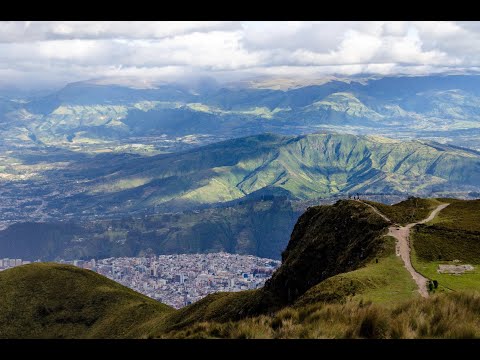
Straddling the equator on South America’s west coast lies a land of unparalleled natural diversity and cultural richness: Ecuador. Combined with the enchanted Galápagos Islands, this region offers an extraordinary adventure for travelers seeking a blend of history, nature, and unique wildlife.
#### **Ecuador: A Microcosm of South America**
Ecuador may be one of the smaller countries in South America, but its size belies its phenomenal diversity. From lush Amazonian rainforests to the high altitudes of the Andes mountains, from vibrant indigenous markets to colonial cities steeped in history, Ecuador encapsulates all that is enchanting about South America.
**Quito and Historical Marvels**
The capital city, Quito, is famed for its well-preserved historic center. Designated a UNESCO World Heritage site in 1978, it boasts an impressive array of colonial architecture alongside vibrant plazas and baroque churches such as San Francisco and La Compañía. Sitting at an altitude of 2,850 meters with Pichincha Volcano looming overhead, Quito also offers breathtaking views and thrilling activities for adventure enthusiasts.
**Cultural Tapestry**
Ecuador’s cultural fabric is woven with rich threads from various indigenous communities including Quechua-speaking descendants. Markets such as Otavalo are famous worldwide for their colorful textiles and handicrafts. These markets not only provide a glimpse into the local craftsmanship but also offer a way to support local economies.
**Natural Landscapes**
Beyond cultural exploration, Ecuador’s landscapes provide dramatic scenery and ample recreational opportunities. The Avenue of Volcanoes presents a thrilling challenge for climbers while offering less strenuous hikes through verdant valleys for casual adventurers. Meanwhile, exploring the Amazon Basin becomes possible through eco-lodges that prioritize sustainable interaction with one of Earth’s most vital ecosystems.
#### **The Galápagos Islands: A Living Laboratory**
About 1,000 kilometers west of continental Ecuador lie the Galápagos Islands — a volcanic archipelago in the Pacific Ocean that has captured imaginations worldwide since Charles Darwin’s historic visit aboard HMS Beagle in 1835.
**Unique Biodiversity**
These islands are famed for their unique ecosystem which includes several endemic species such as giant tortoises, marine iguanas, and flightless cormorants. The absence of natural predators has allowed these species to thrive unchallenged and evolved in fascinating ways which provides insights into evolutionary processes.
**Conservation Efforts**
Visiting the Galápagos involves strict regulations designed to protect its fragile environment. Tourists must adhere to set paths while on guided tours with certified naturalist guides to minimize human impact on these ecosystems. This focus on conservation ensures that visitors can enjoy sightings of wildlife without contributing to habitat destruction or stress on wildlife populations.
**Experiencing Nature Up Close**
Traveling through the islands typically involves island-hopping cruises or staying at select lodges which offer daily expeditions under expert guidance—snorkeling with playful sea lions or watching blue-footed boobies perform their mating dance are just snippets of what awaits in this extraordinary locale.
#### **Connecting Cultures and Conservation**
Combining a trip to both mainland Ecuador and the Galápagos Islands allows travelers not only to witness some of Earth’s most impressive landscapes but also engage deeply with local cultures whilst contributing positively towards conservation efforts that help protect these wonders for future generations.
In essence, whether you’re wandering through ancient cobbled streets in Quito or marveling at tortoises roaming free in their natural habitat on Santa Cruz Island, your journey through Ecuador and the Galápagos will undoubtedly be filled with awe-inspiring moments that connect you more deeply with our planet’s incredible beauty and biodiversity.
